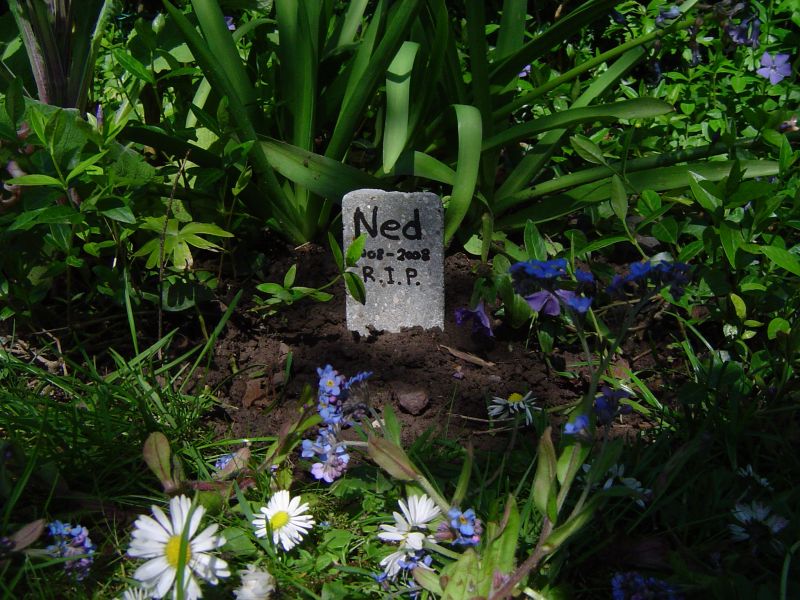++Ned++ (april/may 08)
This is the story about Ned, our ugly duckling.
The parents of Ned laid his egg in our garden, and left him while it was still close to freezing temperatures at night.
Ned was also without protection against all sorts of dangerous animals like magpies, crows, squirrels, cats and an occasional fox.
It was the 8th of April 2008.

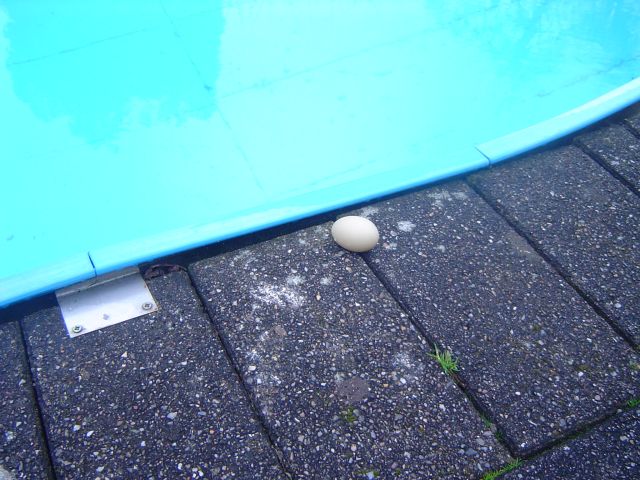
Mattias had to take care of the poor thing, and made a nest on his desk. He kept it at constant 37.5 degrees, and turned him every few hours, while playing WoW.
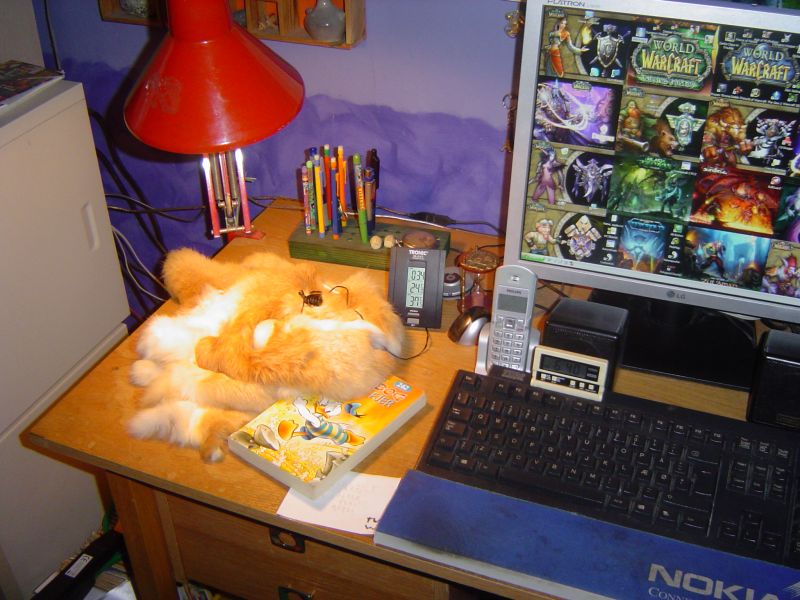
After some time, Ned moved to the living room in a shoe box, because it was annoying having to keep the light on at night.
That is the time that the name Ned was invented. Daniel wrote "op" and "ned" (up and down) on the egg, in order to keep track of the position since everybody kept on turning him.
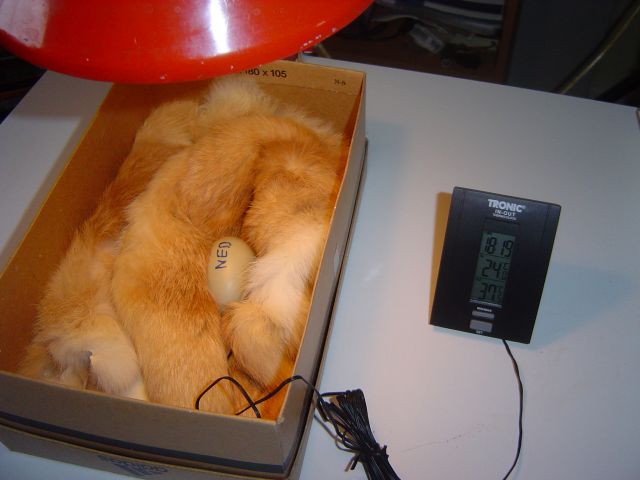
Then we constructed a "virtual world" for him, to protect him from possible temperature fluctuations in the real world, and to make it easier for us turning the egg.
Of course it should be a Lego machine. Daniels Mindstorms would be the perfect thing to control the egg-turning and temperature.
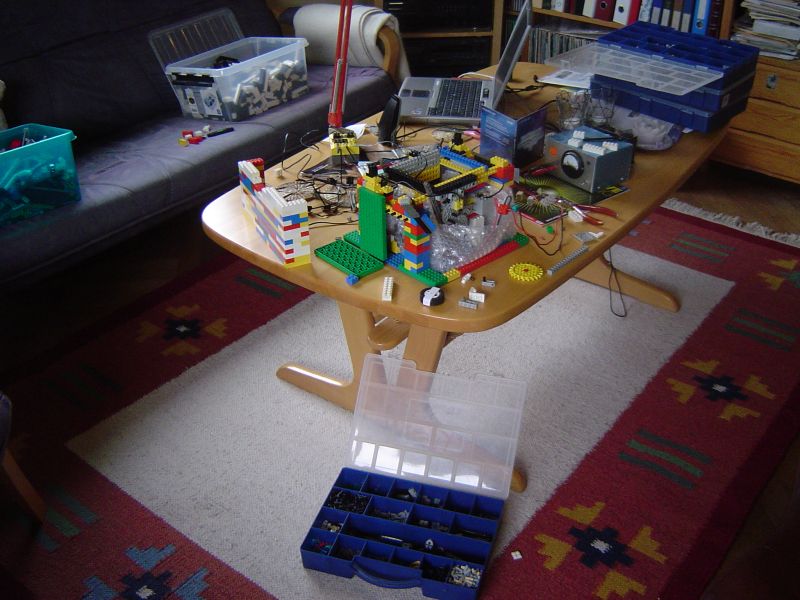
Here Ned is still in the shoebox, while Daniel is fine-tuning the software.
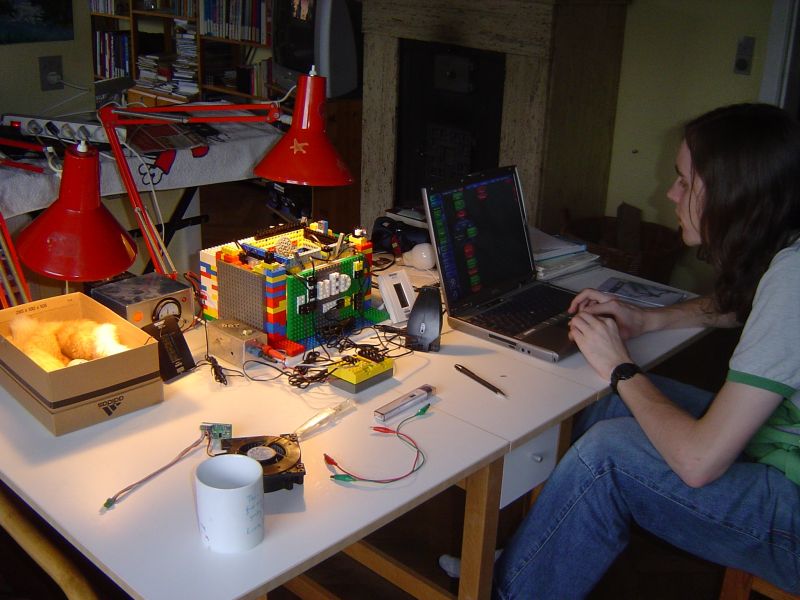
Ned safely in his virtual world.
Notice the 12V power sypply meter, showing 2 Amps current drawn by the bottom heater (this heater is switched on/off by the temperature control, with an on/off ratio depending on the temperature range.) schematics.
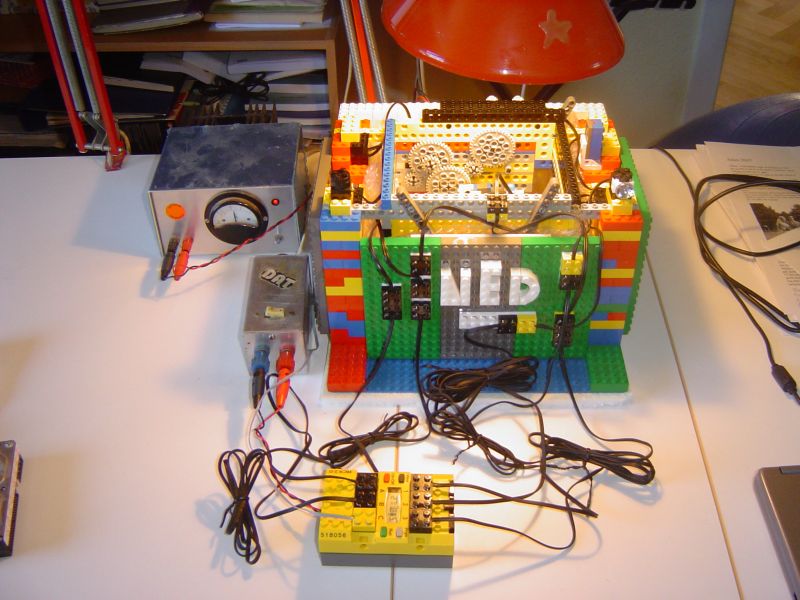
Here some closeups of the machine:
This picture is during test of the temperature control.
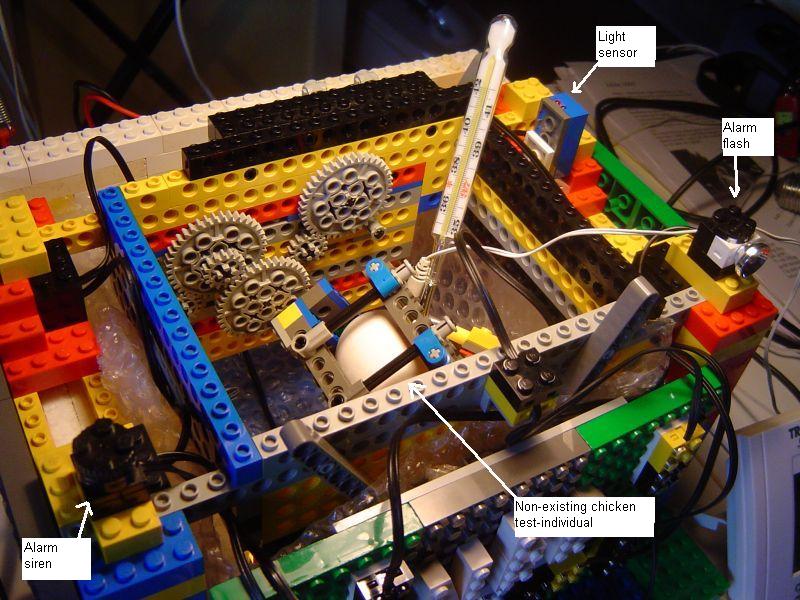
The Mindstorms RCX2.0
Program 5 is running, and there are 32minutes, 27seconds left before the egg is turned.
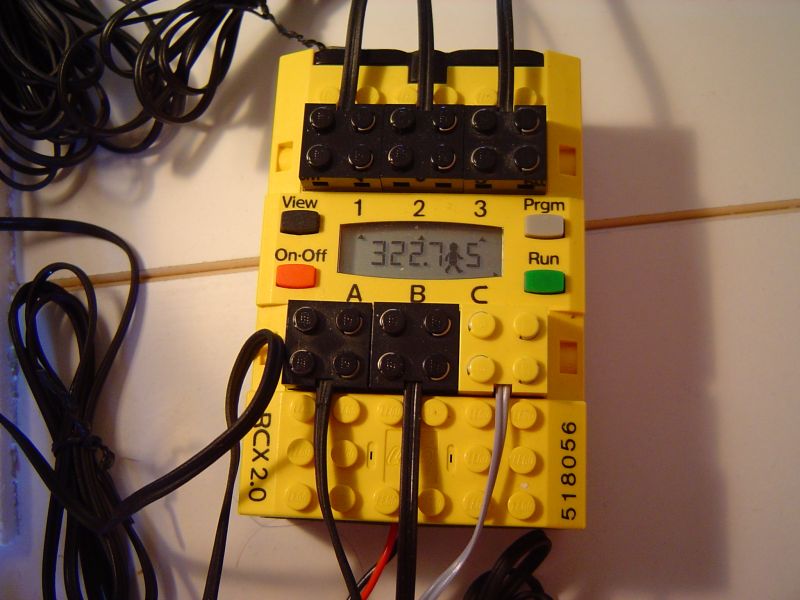
In this picture you can see the motor position switch and the heater control.
The bubble plastic is the water-tight isolation material that holds the water for Nedīs humidity control.
After some time, we mounted a plastic film over the open top of the machine, so the water didn't evaporated so fast. Because of the open structure of the Lego Technic blocks, there was still plenty of air for Ned.
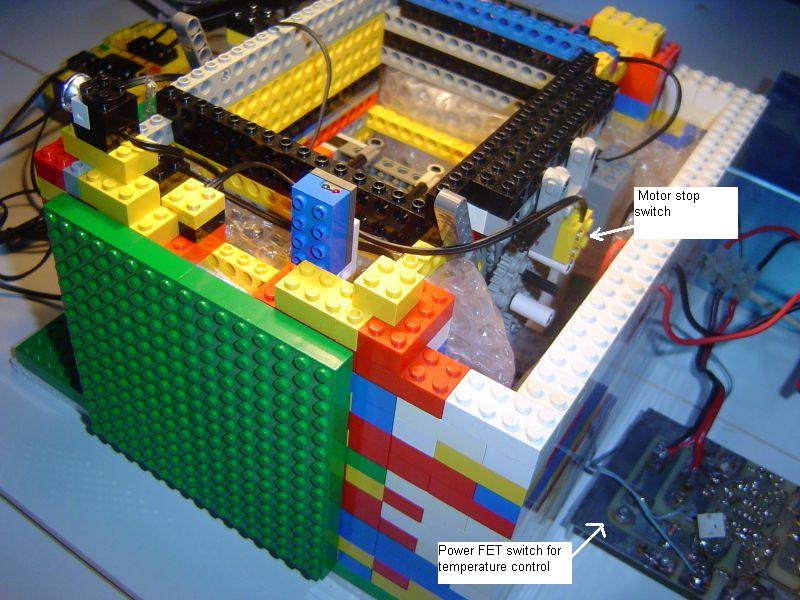
In this picture you can see the temperature sensor and the power resistors of the bottom heater.
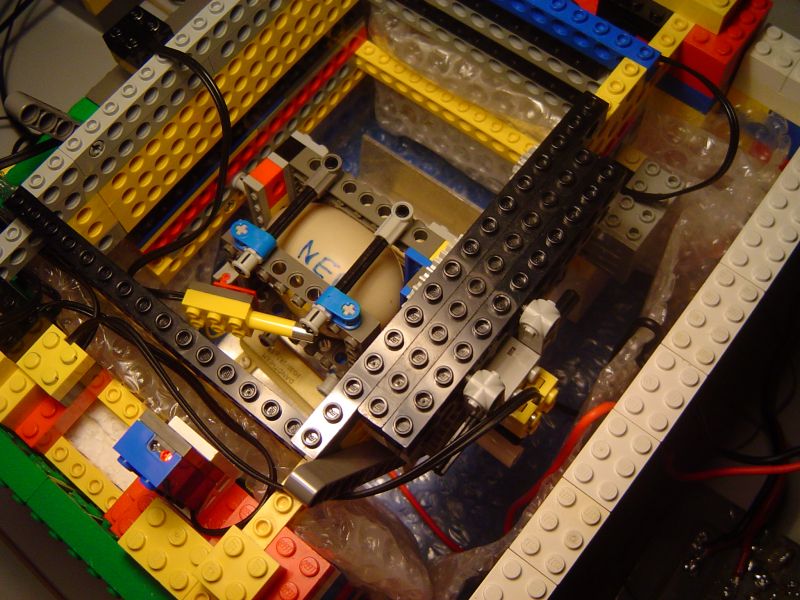
After 2 weeks, a light-check of Ned shows this:
Because the duck egg has such a thick shell, it is hard to see what is going on inside. Is Ned still alive?
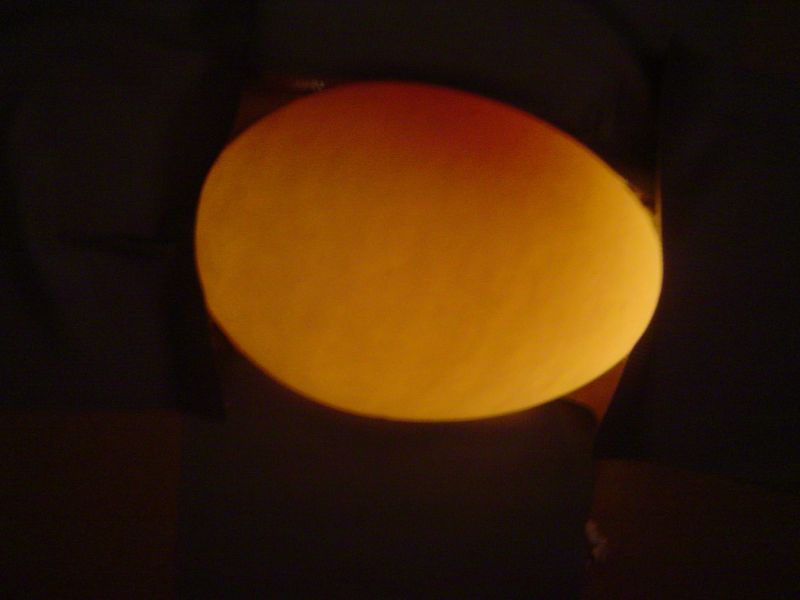
The 2nd of may, an awful thing happened to Ned:
At seven o'clock in the morning, everything was allright. But when Daniel got up (*quite* late) he discovered that something was terribly wrong; the bottom heater was on constantly (that is normally not possible because the control loop has a max on-time of 30 seconds in a row) and the whole machine was melting down. AAArrgh!
Of course, all Lego alarms were ringing, and both Bodil and Mattias had been checking what was wrong but they had looked at the extra thermometer, that was showing HH for "outside" and between 33 and 36 (because it was standing on top of the heater powersupply) for "inside" temperatures. So they had concluded that Ned was to cold and just lowered the top heater lamp. But of course that didn't fix the alarm, and it was in fact the "outside" that was measuring in Ned's chamber, while HH means "High High!". They didn't have the knowledge to see from the heater-current what was going on.
In fact, the bottom heater had been so hot that it had melted through the watertight isolation and even into the Lego and the bottom isolation foam.
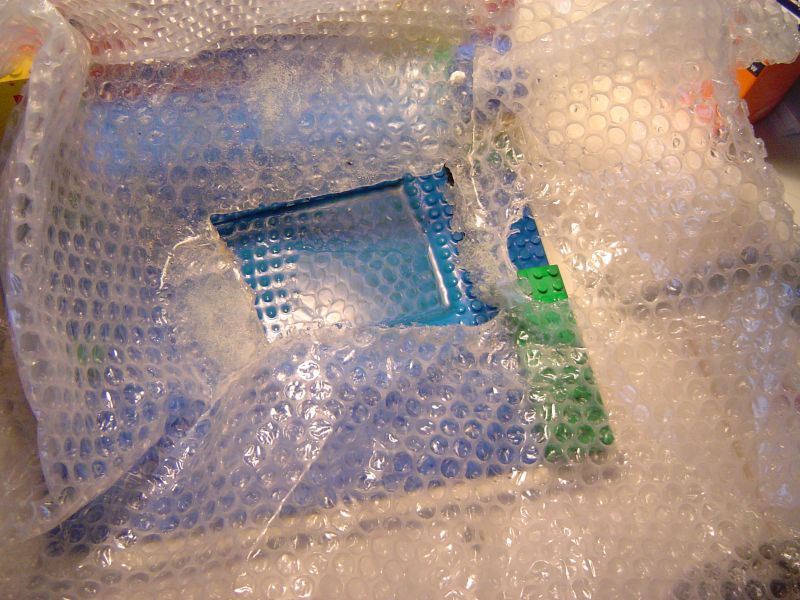
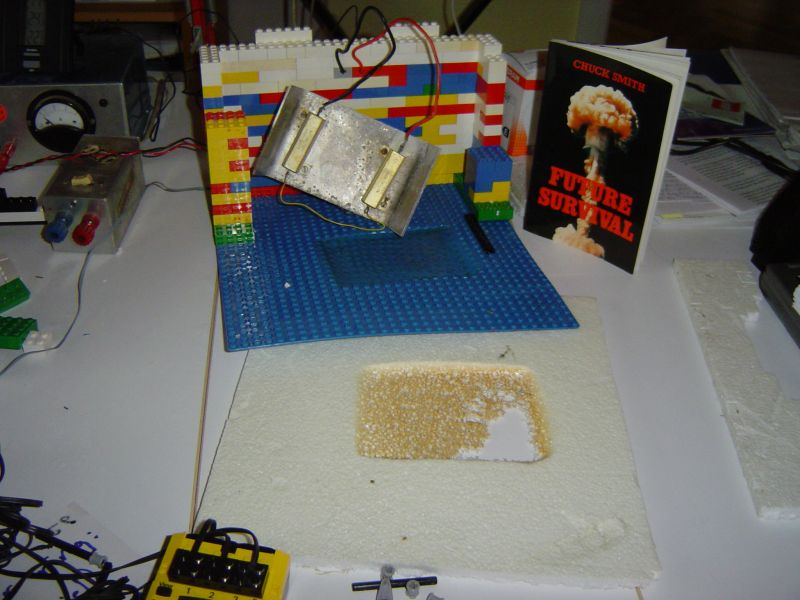
Even at this moment it is still not clear why the bottom heater went constantly on!
Some crime investigation was done to find out what had happened.
Measurements of the sensors of Mindstorms and of the extra thermometer showed, that they both are able to measure up to 70C, and beyond that the extra thermometer says "HH" and the Mindstorms sensor says "70".
So even a high sensor temperature couldn't have made the heater go Tilt.
And the heater swith FET was not broken either; removing the control voltage from the RCX to the gate, switched down the heater current immediately. So no latch up of the FET.
Could it be latch-up of the output of the RCX? The FET has a 33k resistor from gate to ground, and is driven by the output of the RCX via a 5k potmeter that is 2/3 up. So not very likely to get latchup problems here..
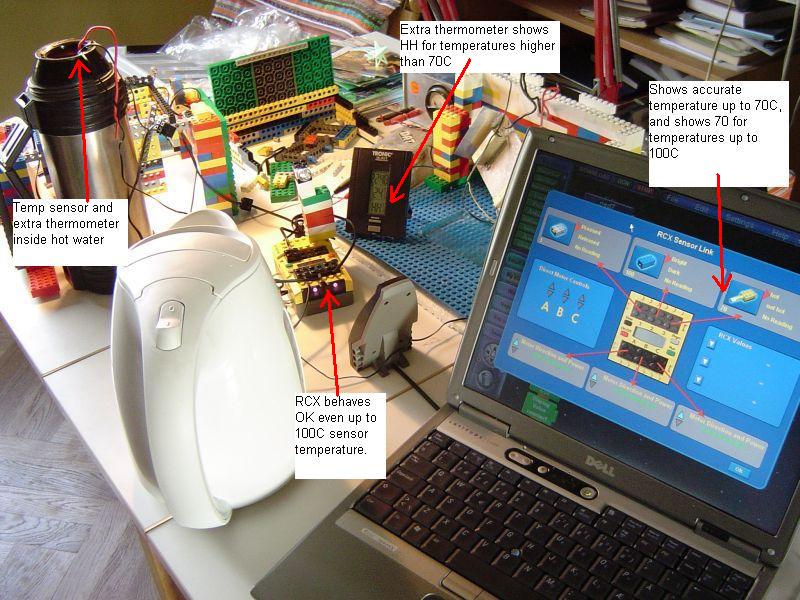
So what can we learn from this?
- Never let life be dependent on high-tech stuff.
- Make it even more high tech, e.g. like sending SMS when the alarm goes off.
- When you take the responsibility of something, you must instruct the person that had the responsibility earlier, how to react when you are not there in an emergency situation.
- Make it easier to see what is going on exactly, instead of just an alarm that can mean many things. It would have been much better if the RCX display had displayed the "time to turning" every other minute and "Ned temperature" the other minutes.
- Make a failure analysis, that can lead to good emergency rescue plans.
- Murphy's law: If something CAN go wrong, it really will go wrong. (even if it is impossible)
BUT..
All this means that Ned had been much more than 70C for some time. The virtual world had killed him...
.....silence.......
He only was -0.011 years old.
